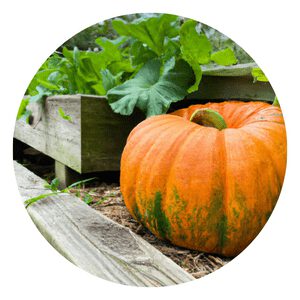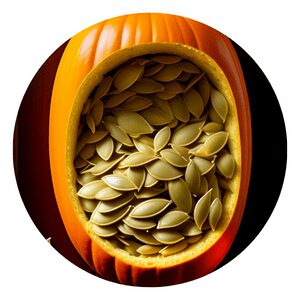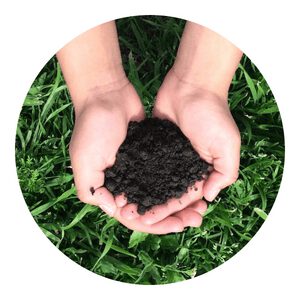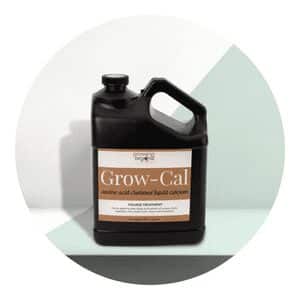How To Grow Organic Pumpkin in a Raised Beds
With the arrival of autumn, many people find themselves yearning to grow their own organic pumpkin.
Fortunately, growing organic pumpkins in raised beds is an easy and cost-effective way to bring a little bit of the harvest season into your own backyard.
With the right soil, adequate sunlight and water, you’ll be able to raise healthy and delicious pumpkins for years to come.

Raised Beds Pumpkin Menu
Benefits of growing pumpkins organically
Growing pumpkins organically has many benefits that are worth considering.
By growing pumpkins without the use of synthetic chemicals and pesticides, you can enjoy healthier and more flavorful fruit, while also promoting a sustainable and eco-friendly growing environment.
Here are some of the key benefits of growing pumpkins organically:
Healthier and More Flavorful Fruit: Organic pumpkins are grown using natural methods, which can result in healthier and more flavorful fruit.
Organic growing practices help to build up the soil’s fertility and promote healthy plant growth, resulting in more nutritious and better-tasting fruit.
Environmental Protection: By avoiding synthetic chemicals and pesticides, organic pumpkin growing helps to protect the environment.
These chemicals can leach into the soil and groundwater, contaminating the environment and causing harm to wildlife and other living creatures.
Supports Sustainable Agriculture: Organic growing practices promote sustainable agriculture by building soil fertility and promoting healthy plant growth without the use of synthetic chemicals.
This helps to conserve resources and promote long-term productivity of the soil.
Better for Pollinators: Organic pumpkin growing is also beneficial for pollinators such as bees and butterflies, as it provides a safe and healthy habitat for these important insects to thrive.
No Chemical Residues: Organic pumpkins are free of chemical residues that can be harmful to human health.
By growing pumpkins organically, you can be confident that the fruit you harvest is safe and free of harmful chemicals.
Growing pumpkins organically has many benefits, including healthier and more flavorful fruit, environmental protection, support for sustainable agriculture, benefits for pollinators, and the absence of chemical residues.
These benefits make organic pumpkin growing a great choice for anyone who wants to grow their own fruit in a sustainable and eco-friendly way.
Purpose of using raised beds for pumpkin growing
Raised beds are a great way to easily grow organic pumpkins in your own backyard.
Not only do they make the process easier, but they also provide superior soil quality and can even improve the taste of your pumpkins.
Raised beds are ideal for growing any type of vegetable, including pumpkins due to their versatility and adaptability to varying conditions.
When using raised beds for pumpkin growing, it is important to ensure that there is adequate drainage as well as plenty of sun exposure throughout the day.
The soil used should be amended with compost or peat moss and fertilizer, such as fish emulsion or aged manure, should be added in order to add nutrients throughout the season.
Additionally, it is important to choose a variety that will thrive in your region’s climate and has good resistance against diseases and pests.
Preparing the Raised Beds
If you are looking to start a pumpkin patch and want to get the most out of your harvest, then raised beds may be a great option for you.
Raised beds offer various benefits including improved drainage, fewer weeds, and more efficient use of space.
Preparing the raised bed is an important first step to ensure that your pumpkins have the best growing environment possible for a successful harvest.
Choosing the right location
When it comes to growing organic pumpkin in raised beds, the location you choose is an essential factor.
The right spot will provide your plants with enough sunlight and ensure they get the right amount of water.
The ideal spot should be in full sun, meaning six or more hours of direct sunlight per day.
This will help promote photosynthesis and give your pumpkins plenty of warmth for optimal growth.
Additionally, look for a place that has good drainage so that rainwater can easily move away from the soil and avoid pooling up around your plants’ roots.
Lastly, consider using a trellis or stakes for support as your pumpkins grow bigger and heavier over time.
Have this structure ready before planting so you can easily tie vines around it as they begin to climb up and out of the raised bed.
Size and materials for the beds
Creating an optimal environment for growing organic pumpkins starts with having the right bed size and materials.
The most important factor when choosing a bed is its size; it should be sized according to the amount of space you have available in your garden.
If you have a large area, then you can use larger beds that measure four feet wide and up to eight feet long.
For smaller gardens, consider narrower beds measuring two or three feet wide and up to six feet long.
It’s also important to consider the material used for the beds. Ideally, choose untreated lumber such as cedar, cypress, redwood or hemlock since these won’t leach toxins into your soil.
If using recycled wood or railroad ties, make sure they’re free from chemicals that could harm your crops.
Preparing the soil mixture
Organic pumpkin growing in a raised garden bed is an achievable goal for keen gardeners and farmers alike.
Preparing the soil mixture is essential to ensure that your pumpkins will thrive and grow healthy, abundant fruit.
The first step to creating the perfect soil mixture for your pumpkins is to combine equal parts of organic compost, sand, and perlite.
The organic compost provides a nutrient rich foundation while the sand helps with drainage so that water can easily pass through, and finally perlite increases aeration which helps provide oxygen for plant roots.
Additionally, you should add some fertilizer such as bone meal or blood meal for an extra boost of nutrients.
When mixed together, these components create a light yet nutrient-rich soil ideal for growing pumpkin plants in raised beds.
Adding compost and other organic matter
Growing organic pumpkins in a raised bed is not only an incredibly rewarding activity, but can also be extremely beneficial to the surrounding environment.
Adding compost and other organic matter to the soil is essential for providing needed nutrients that pumpkins need to thrive.
Composting is a natural process of breaking down food scraps, yard waste and other organic materials into nutrient-rich fertilizer that can help improve soil structure, texture, water retention capabilities and add essential nutrients to the soil.
Compost creates air pockets which helps maintain aeration in the soil and allows oxygen and water to reach roots more quickly.
Additionally, adding compost provides beneficial bacteria and fungi which can help improve root health by increasing root mass.
Selecting the Right Pumpkin Variety
There are several types of pumpkins that grow well in raised beds.
The best type of pumpkin for raised beds depends on the purpose for which you are growing the pumpkins and the specific growing conditions in your garden.
Here are a few examples of pumpkins that are well-suited to raised bed growing:
“Small Sugar” or “New England Pie” – These compact, bush-type pumpkins are ideal for small gardens or raised beds.
They produce fruit that are small to medium in size, making them a good choice for pie making or other culinary uses.
“Jack O’Lantern” – This is a classic Halloween pumpkin that is well-suited to raised bed growing.
It is a vine-type pumpkin that produces large, round fruit with a deep orange color.
“Honey Bear” – This is a small, bush-type pumpkin that produces fruit that are about the size of a softball.
The bright orange fruit are perfect for decoration and have a sweet, nutty flavor that makes them ideal for cooking.
“Baby Boo” – This is a miniature pumpkin that is perfect for raised bed growing.
The tiny, white fruit are ideal for decoration and are also edible.
When choosing a pumpkin variety, it’s important to consider the purpose for which you are growing the pumpkins and the specific growing conditions in your garden.
It’s also important to choose a variety that is well-suited to your climate and has a growth habit that is compatible with your raised bed setup.
From summer heat to fall chill, A palette of pleasure I will fill. Seasons bring my vision true, When in my garden I select the hue. Choose pumpkin seeds a painter's art — Orange canvas with charmed stars. Nature's glow, vibrant and bold — Bringing richness when all unfold. Lush and lively tints that bless my sight, Describing this wondrous seasonal delight!
Chappy The Gardener
The differences between bush and vine varieties
Organic pumpkin growing in raised beds is a popular garden activity for many home gardeners.
But did you know that there are two main types of pumpkins: bush and vine varieties?
Bush pumpkins include compact, short-vined varieties such as Cinderella, Sugar Pie, and Baby Boo.
These are typically smaller than their vining counterparts and tend to be more manageable in raised bed gardens.
They generally require less space as they spread out rather than grow up.
As a result, bush pumpkins may need less staking or other support structures when grown in raised beds.
Vining pumpkin varieties such as Atlantic Giant, Big Max and Long Island Cheese typically produce large fruits on long vines that can reach up to 20 feet in length if given enough room to grow.
Planting the Pumpkins
Planting the Pumpkins is a great way to get into the Halloween spirit!
Growing organic pumpkin in raised beds is an easy, fun activity for kids and adults alike.
Not only will you have an abundance of homegrown pumpkins to choose from, but this method of gardening also helps keep your soil healthy while reducing weeds and pests.
Raised bed gardening has several advantages over traditional ground-level gardening.
Raised beds are easier to tend because they provide better drainage and improved soil aeration, allowing plants to grow more vigorously with less effort.
Additionally, raised beds can help deter various insects, slugs and small animals from destroying your crops before they’re ready for harvest.
Timing of planting
Timing of planting is a key factor in successfully growing organic pumpkins in raised beds.
Proper timing of planting can mean the difference between a bountiful, healthy harvest and one that is subpar.
With careful planning and preparation, gardeners have the opportunity to maximize their pumpkin production by following some simple guidelines.
The best time to plant pumpkins depends on where you live, so it’s important to be aware of your local climate and temperature fluctuations throughout the year.
Pumpkins need warm soil for germination, so aim for an average soil temperature of at least 65 degrees Fahrenheit before planting seeds or transplants.
Generally speaking, you should wait until two weeks after the last frost date before planting pumpkins outdoors so as not to damage any developing plants.
Spacing between plants
Spacing between plants is an important factor in successful organic pumpkin growth.
Gardeners must carefully consider the size of their pumpkins and how much room they will require to spread out.
This is especially true when it comes to raised beds, as space is limited and pumpkins tend to be large vining plants that need plenty of room for healthy growth.
The amount of distance between each plant should depend on the variety being grown – some take up a lot more space than others, so be sure to research your particular type carefully before planting.
Generally speaking, pumpkins require about three feet of space around each one for optimal growth.
However, if you are growing smaller varieties or have a particularly large bed with plenty of extra room, you can lessen this spacing accordingly.
Transplanting seedlings
Transplanting seedlings is a simple but important step in growing organic pumpkins in raised beds.
Whether you are starting from scratch with seeds or using purchased plants, transplanting will give your pumpkin the best opportunity to thrive and bear fruit.
The ideal time for transplanting seedlings is late spring or early summer, when temperatures are warm and there is no danger of frost.
To prepare for planting, fill each raised bed with rich soil mixed with compost.
Dig holes for the seedlings about three feet apart, deep enough that their roots can spread out comfortably beneath them.
Proper care and maintenance
Raised beds are a great way to grow organic pumpkin, provided the plants get proper care and maintenance.
When it comes to caring for pumpkin plants, one of the key considerations is water. It’s important to make sure your plants get enough water, but not too much.
Water them deeply at least once a week—if you’re in an area with hot summers and low rainfall, they may need watering more often.
Additionally, try using mulch around your pumpkins which can help retain moisture and reduce weeds as well as keeping soil warm during colder months.
Fertilizing is another part of proper care and maintenance that shouldn’t be overlooked when growing organic pumpkins.
Using Organic Fertilizers
Organic fertilizers can be used to grow organic pumpkin in raised beds.
Not only are they more natural and less harmful to the environment, but organic fertilizers also provide essential nutrients for plant growth.
By following a few simple steps, anyone can reap the benefits of using organic fertilizers to help their pumpkin plants flourish and bear fruit!
Organic fertilizers and their benefits
Organic fertilizers are fertilizers that are derived from natural sources such as plants, animals, and minerals.
These fertilizers help to promote healthy soil and plant growth, which is essential for growing healthy pumpkins.
One of the primary benefits of using organic fertilizers when growing pumpkins in raised beds is that they provide a slow and steady release of nutrients to the plants.
Unlike synthetic fertilizers, which can burn the roots of the plants and lead to damage, organic fertilizers are gentler and provide a consistent source of nutrients over time.
Another benefit of using organic fertilizers is that they improve the structure and fertility of the soil.
By adding organic matter to the soil, such as compost or aged manure, the soil becomes more aerated, which allows roots to penetrate deeper and absorb more water and nutrients.
This helps to promote healthy root growth and overall plant health.
Organic fertilizers also help to build up the populations of beneficial microorganisms in the soil, such as bacteria and fungi, which play an important role in breaking down organic matter and releasing nutrients to the plants.
This helps to ensure that the soil is fertile and able to support healthy plant growth.
In addition to providing nutrients and improving soil fertility, organic fertilizers also have other benefits for the environment.
For example, they help to reduce soil erosion and conserve water by improving the structure of the soil and retaining moisture.
Using organic fertilizers when growing pumpkins in raised beds is a great way to promote healthy plant growth, improve soil fertility, and conserve resources.
Whether you are a seasoned gardener or a beginner, incorporating organic fertilizers into your gardening routine can help you achieve healthy, productive pumpkins that are both delicious and environmentally friendly.
Examples of organic fertilizers
Organic fertilizers are an important part of growing pumpkins in a raised bed.
Compost, manure, and bone meal are all great examples that can help get your plants off to a healthy start.
Compost is made up of organic matter such as vegetable scraps, leaves, and grass clippings that have decomposed over time.
It is rich in nutrients like nitrogen, phosphorus, and potassium which can be beneficial for pumpkin plant growth.
Manure from cows or sheep is another excellent source of organic fertilizer that contains added microorganisms beneficial for garden soil health.
Finally, bone meal offers added calcium for the pumpkin plants and other vegetables you may be growing in your raised beds.
Using these examples of organic fertilizers can help make sure your pumpkins will grow tall and strong!
How and when to apply organic fertilizers
Organic pumpkins are a great addition to any raised bed garden.
Growing organic pumpkins is a fun, rewarding experience that yields delicious and nutritious results.
In order to get the most out of your pumpkin plants, it is important to know when and how to apply organic fertilizers.
The best time to apply organic fertilizer to pumpkin plants is before planting, or during the early stages of growth.
When preparing for planting, mix in about two inches of compost or aged manure into your soil for maximum benefit.
During the growing season, use an all-purpose fertilizer like fish emulsion once every two weeks until flowering begins.
Once flowers begin to open up, switch over to using a high phosphorus fertilizer such as bone meal or rock phosphate every couple weeks.
This will help promote strong fruit development and bigger yields from each plant.
Combining organic fertilizers
For optimal pumpkin growth and health in raised beds, combining the use of organic fertilizers with proper watering and mulching is essential.
These three practices work together to create a healthy and supportive environment for pumpkin plants to thrive.
Organic fertilizers provide essential nutrients to the plants and improve the structure and fertility of the soil.
However, in order for the plants to be able to absorb these nutrients, they need a consistent supply of water.
Proper watering helps to keep the soil moist and ensures that the roots have access to water and nutrients.
Mulching is another important practice for promoting healthy pumpkin growth in raised beds.
A layer of mulch, such as straw or leaves, helps to retain moisture in the soil, regulate soil temperature, and suppress weed growth.
This helps to reduce the amount of water that is lost to evaporation and reduces the amount of time and effort required for weeding.
When these three practices are combined, they create a supportive environment for pumpkin plants to grow and thrive.
The organic fertilizers provide essential nutrients, the proper watering ensures that the roots have access to water and nutrients, and the mulch helps to retain moisture and suppress weed growth.
In addition to promoting healthy growth and productivity, combining organic fertilizers with proper watering and mulching also helps to conserve resources and reduce environmental impact.
By using organic fertilizers, reducing water loss, and suppressing weed growth, you can create a garden that is not only productive, but also sustainable and environmentally friendly.
Combining organic fertilizers with proper watering and mulching is essential for optimal pumpkin growth and health in raised beds.
By working together, these three practices create a supportive environment that promotes healthy plants, reduces environmental impact, and conserves resources.
Dealing with Pests and Diseases
Growing organic pumpkin in raised beds can be a rewarding experience, but it also comes with its own set of challenges, especially when it comes to dealing with pests and diseases.
The following are some strategies for dealing with pests and diseases in an organic way:
Crop rotation: By rotating your pumpkin crops, you can reduce the likelihood of pests and diseases building up in the soil.
This is because pests and diseases are often specific to certain plants and rotating your crops can help reduce their populations.
Companion planting: Companion planting involves planting other plants alongside your pumpkin plants that can help repel pests or improve the health of the soil.
Some companion plants for pumpkin include marigold, nasturtium, and basil.
Natural pest control: There are many natural pest control methods you can use to keep pests at bay.
For example, you can use beneficial insects like ladybugs, lacewings, and predatory mites to control aphids and other pests.
You can also use companion plants to deter pests. For example, planting garlic near your pumpkin plants can help repel many types of pests.
Handpicking: Hand picking pests off your plants can be an effective and inexpensive way to control pests.
This is especially true for pests like squash bugs, which are easy to spot and remove by hand.
Cultural control: Cultural control involves using techniques to create a growing environment that is less favorable to pests and diseases.
For example, maintaining healthy soil, providing adequate water and nutrients, and providing adequate spacing between plants can help reduce the likelihood of pests and diseases.
Biological control: Biological control involves using beneficial microorganisms to control pests and diseases.
For example, using a naturally occurring bacteria called Bacillus thuringiensis can help control caterpillar pests.
Use of natural fungicides: There are many natural fungicides that can be used to control fungal diseases in pumpkin plants.
For example, using a solution of baking soda and water can help control powdery mildew, a common fungal disease in pumpkin plants.
By following these strategies, you can help reduce the likelihood of pests and diseases affecting your pumpkin plants and maintain a healthy and productive organic pumpkin garden.
Harvesting and Storing the Pumpkins
Harvesting and storing pumpkins grown in raised beds can be a satisfying and important step in the process of growing organic pumpkins.
Here are some tips to help you successfully harvest and store your pumpkins:
Timing: The timing of harvest is important when it comes to pumpkins.
You should wait until the pumpkin’s skin has hardened and the color has changed to its final color. This is typically around 80-90 days after flowering.
You can test the readiness of the pumpkin by gently pressing your thumbnail into the skin. If it is difficult to pierce the skin, it is ready to be harvested.
Cutting the pumpkin: When it is time to harvest your pumpkin, use a sharp knife or pruning shears to cut the stem of the pumpkin, leaving a few inches of stem attached.
Do not try to pull the pumpkin from the vine, as this can damage the skin.
Curing: After harvesting, let the pumpkins cure in the sun for about a week.
This will help to harden the skin and improve the storage life of the pumpkin.
Storing: Store your pumpkins in a cool, dry place with good ventilation. A temperature range between 50-60°F is ideal for storage.
Do not store your pumpkins near apples, as apples emit ethylene gas which can cause your pumpkins to spoil.
Checking for spoilage: Check your stored pumpkins regularly for signs of spoilage, such as soft spots, mold, or an off smell.
If you find a pumpkin that is starting to spoil, remove it from your storage area immediately to prevent it from affecting the other pumpkins.
Using: If you need to use your pumpkin before it is fully cured, be sure to wash it thoroughly before using to remove any dirt or debris.
By following these tips, you can help ensure that your organic pumpkins are harvested and stored correctly, so that you can enjoy their fresh taste and quality for as long as possible.
Lorem ipsum dolor sit amet, consectetur adipiscing elit. Ut elit tellus, luctus nec ullamcorper mattis, pulvinar dapibus leo.
Click To Grow
Helps Us Grow – Share If You Like





















